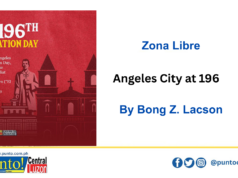Dairy carabao entrepreneur Francisco Solis of Gen. Trias, Cavite now delivers milk and kasilyo (white cheese) to his customers aboard his P1.3 million Ford Everest SUV. He bought his vehicle thru his carabao dairying enterprise.
SCIENCE CITY OF MUÑOZ – Determined efforts to improve the carabao in terms of breed, population, health and other relevant aspects, had its beginning in 1973.
The Philippine Council on Agriculture Research (PCAR), later Philippine Council for Agriculture, Forestry and Natural Resources Research and Development (PCARRD), included research activities for the carabao.
In 1976, the research and development (R&D) for the Philippine carabao was assigned to a specific group, the Carabao Commodity Team.
This was a significant development as the R&D for the Philippine carabao was given exclusive attention, time and funding under a particular team.
The “strengthening of the carabao research and development project” put in place trailblazing activities for carabao improvement and development in the country.
But more than anything else, the biggest achievement in this project was the inspiration to give birth to the idea of effectively, efficiently, and permanently institutionalizing carabao improvement and development in the country.
The idea eventually led to the enactment of a law that specifically mandates full attention not only to carabao improvement and development but also to the direly needed concomitant carabao-based industry in the country.
In 1992, the Philippine legislature passed a law, Republic Act 7307, titled “An Act Creating the Philippine Carabao Center to Propagate and Promote the Philippine Carabao and for other Purposes”.
The legislative moves in the House of Representatives and in the Senate for the creation of PCC were initiated by PCARRD. The principal sponsor of the Senate bill was then Senator Joseph Estrada.
The approved bill was signed into law on March 27, 1992 by then President Corazon Aquino, Speaker Ramon Mitra and Senate President Neptali Gonzales.
On April 1, 1993, then President Fidel Ramos appointed Dr. Libertado C. Cruz as the first director of PCC. Since that time to this day, Dr. Cruz aptly and judiciously steered the wheels of the PCC machinery.
Since then, lots of beautiful things went on the carabao’s way. For one, there is a world-class “center” dedicated for the improvement of its breed and for taking to the intended clientele all that the improved breed of carabao offers for the benefit of the people and communities.
The center’s main headquarters are in the Science City of Muñoz in Nueva Ecija. It has 13 regional centers in strategic places in the country.
Among others, the PCC has scored breakthroughs in employing biotechnologies for artificial insemination, multiple ovulation and embryo transfer, in vitro embryo production, ovum pick-up, oocyte and embryo cryopreservation, semen sexing, DNA-aided system, and somatic cell nuclear transfer or cloning.
It has also developed, packaged, and implemented programs and projects for the multiplication of improved breed of carabaos, and even purebred buffaloes, for the benefit of the farmers.
‘Businessing’ the carabao
Now, in the hands of the intended clientele, the improved breed of carabaos is triggering a scintillating giant leap forward by people and communities.
Documentations made by the PCC showed remarkable successes in carabao raising among people and communities in many parts of the country.
In Nueva Ecija, carabao dairying is giving big dividends to farmers and entrepreneurs. A total of 36 dairy cooperatives in the province, with more than a thousand members, is operating.
The coops are members of the Nueva Ecija Federation of Dairy Carabao Cooperatives (NEFEDCCO) which is based in San Ricardo, Talavera, Nueva Ecija.
From 1,000 to 1,200 liters of milk are collected from the dairy farmers a day which is bought at P40 to P45 per liter. Half of the volume is sold as fresh milk while the rest is made for milk products such as pastillas de leche, pulvoron, lacto juice, kesong puti, chocolate milk, and others.
“In seven years, the total volume of milk produced in Nueva Ecija by the cooperatives was 1,741,163.71 million liters,” Wilma del Rosario, coordinator of the PCC National Impact Zone Program, said.
The gross income from this milk production was P62.7 million, she added. It benefited at least 1,300 farmers.
From 1,000 purebred dairy buffaloes loaned out to Nueva Ecija coops under certain terms and conditions, a total of 3,250 crossbred calves were produced.
Of this number, 1, 7614 are females which have boosted milk production output. At the PCC headquarters, Mozzarella cheese is produced by the PCC and is marketed in different places.
A big production and marketing outlet has just been inaugurate, to be operated by a quasi-government entity, is set to operate soon.
The 139 members of the dairy cooperative in Gen. Trias, Cavite have reason to be always on cloud nine. They worry not about spending their money for their needs as “cash money will surely come again tomorrow”.
Their coop’s gross sales in April and May 2010, for example, were to the tune of Php 739,479 and Php 713,903, respectively. They paid the milk a day after it was collected.
Individual farmer-entrepreneurs have also shown success in buffalo dairying. A private entrepreneur, Danilo Fausto of Talavera, Nueva Ecija, has put up the DVF Farm which is engaged in milk production and processing of milk into various products.
His enterprise is thriving and is well-known not only in the province but in some other places.
Another entrepreneur in Talavera town, Engr. Jaime Ramos has at least 60 purebred buffaloes, 29 calves, two bulls, and two work animals in his semi-commercial farm.
His 29 lactating carabaos yields an average of six liters of milk a day which he sells at P45 per liter in San Miguel, Bulacan. Easily, he makes at least P7,000 a day.
In San Jose City, Salvador Tobias, found that raising carabaos for dairying can bond his family together even the married ones. The whole family (he has seven children, two of them married), 21 dairy carabaos which provide good daily income for them.
Tobias was named “Best Buffalo Dairy Farmer” by the PCC during its anniversary celebration last March.
In Gen. Trias, Cavite, one farmer, Francisco Solis, 48, proved to be a nonpareil dairy farmer and entrepreneur.
After some time of dairying, and rolling his dice, so to speak, he was able to acquire four passenger jeepneys, an owner-type jeep, an L-200 van, a tricycle, thresher and hand tractors. He was also able to put up a bakery and a store.
Above all, he was able to buy a P1.3 million Ford Everest van. He now delivers his raw milk and kasilyo (native cheese) using his Ford Everest.
In Barangay Navarro, several owners of dairy carabaos have a “pleasant worry” – how to spend their daily cash flow. In fact, they always say: “Let’s spend our cash today for our needs as money will come again tomorrow.
Their daily cash flow comes from the milk they sell to their cooperative, the Gen. Trias Dairy Raisers Multi-purpose Cooperative.
Going north, the local government unit and the farmers in San Agustin, Isabela are very much stirred as the number of the crossbred carabaos in their town has now reached 1, 900.
With the over P5 million assistance from Isabela Gov. Faustino Dy, the town has put up milking barns in different barangays and a carabao milk central processing plant.
“Our goal is to have more than 3,000 crossbred by 2015,” Mayor Virgilio Padilla said.
“A robust carabao and meat industry is high in our agenda. It will be a big help for our town and people in terms of economic and social development,” he added.
Every September 28, the town holds its “Nuang (carabao) Festival”. The town also girds to be declared as the “Crossbred Carabao of the Philippines”.
Look forward
The achievements of entities and individuals who are making good in their undertaking on carabao improvement and cashing in on the benefits that the improved breed bring about seem to warm the cockles of the heart.
Yet, the full flowering of a robust carabao-based enterprise in the country is still yet to come.
In the “Ruminant Industry Roadmap, 2010-2034” developed by the ruminant animals’ stakeholders, the target dairy carabao population in the country is 5.447 million by 2034.
The projected milk production from the female population is placed at 5.488 million liters which is 61 % share of milk production from other ruminants like cattle and goat. For meat, the projected production is at 5.903 million metric tons or 51% of the meat from ruminants.
The outputs from the carabaos mean huge income for farm families, employment, and additional revenues for the government including different communities.
As it is, there is no doubt that the carabao, with its improving breed, makes people and communities move forward in leap and bound.




